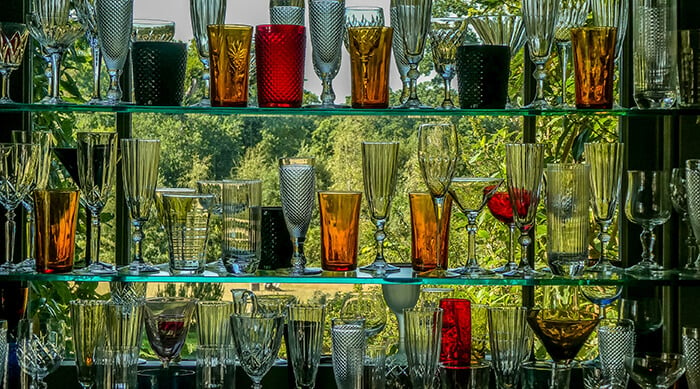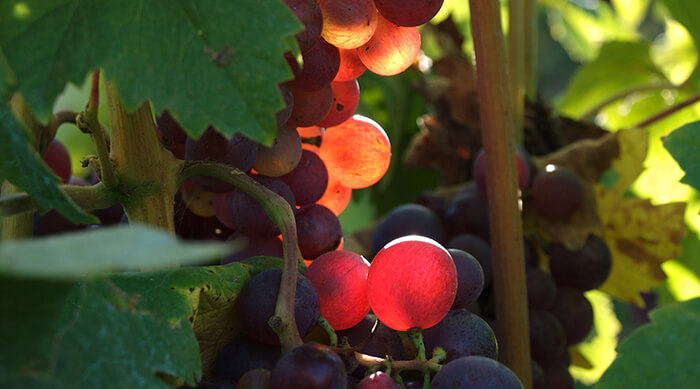A serving of most conventional wines is 5 oz. The CDC set that number for average red and white wines. Moderate drinking is defined as just a single serving of wine per day for women and 2 glasses of wine daily for men. That number drops for higher-alcohol wines.
How much alcohol is in a glass of wine? The average glass of wine has an alcohol by volume (ABV) of about 12%.
The higher the wine alcohol content, the lower that serving size should go.
A fortified wine like a port is typically served in a 3-oz glass. The same goes for strong dessert wines. Anything beyond that, and you’re likely to feel the effects of that port much faster.
Sparkling wine and champagne is typically served as a 4-oz pour. That’s not because bubbly wines are any stronger than red and white varietals. You just want some room at the top of your flute for the bubbles.
A 5-oz pour is the standard when we’re thinking about how many glasses you’ll get out of a bottle, but as you’ll see, the sizes of wine bottles can get intense.
Bottle Sizes
Let’s get beyond what the standard 750 ml bottle of wine holds and dig into some of the big, bigger, and biggest bottles out there. Wine bottles are typically measured by millimeters instead of ounces of wine. It’s just easier to give nice round numbers rather than doing the conversions.
Note: For the math fans out there, 1 fluid ounce is equal to about 29.5 ml. A standard 5-oz glass is about 147 ml, and a single liter is about 34 oz.
Most of the larger bottles are used for decorative purposes and likely not available at your corner wine shop. If you imagine yourself pouring out of one of these, you’ll quickly understand why.
It’s also important to note that wine does go bad. If you’re picking up a bottle for a night of Netflix with your honey, a conventional bottle of wine is probably a safer bet than a Magnum.
| Bottle Type | Bottle Size | Number of Servings |
| Split or Piccolo | 187.5 ml | 1 |
| Demi or Half | 375 ml | 2.5 |
| Magnum | 1.5 L | 10 |
| Double Magnum or Jeroboam | 3 L | 20 |
| Rehoboam | 4.5 L | 30 |
| Methuselah or Imperial | 6 L | 40 |
| Salmanazar | 9 L | 60 |
| Balthazar or Belshazzar | 12 L | 80 |
| Nebuchadnezzar | 15 L | 100 |
| Melchior | 18 L | 120 |
| Solomon | 20 L | 130 |
| Sovereign | 25-26.25 L | 175 |
| Primat or Goliath | 27 L | 180 |
| Melchizedek or Midas | 30 L | 200 |
Why the Biblical Names?
You may have noticed that some of the bottles sound like they’ve been named after biblical figures. While we’re not quite sure when these wine bottles were named, at some point winemakers decided that it’d be appropriate to use biblical characters as their inspiration.
Jeroboam I, for example, was the first king of the Kingdom of Israel, so maybe the name refers to a time of plenty. Methuselah was the oldest living person in the Bible. The name could be a nod to how long it’d take to age a bottle that large, although we’d never recommend aging a wine for 969 years.
Don’t Let the Glass Size Fool You
You’ve likely seen those red wine glasses that look like they could hold a full can of soup, not to mention a robust serving of wine. Wine glasses come in a variety of shapes and sizes, but that doesn’t mean serving sizes change as the glasses get bigger.
The standard white wine glass for your favorite chardonnay holds 8 to 12 oz. Red wine glasses range from 8 to 22 oz. Some are even larger.
If you have a tough time figuring out what 5 oz looks like, you’re not alone.
At-home pours of any alcohol tend to be a little heavier than you’d see while you’re out, although large wine glasses can trick professionals, too. Many wine drinkers pour themselves anywhere from 7 to 9 oz at home. If you feel like you’ve had too much wine, you might be right.
The ideal pour is still 5 oz whether you’re sipping on a pinot noir or a cabernet sauvignon. Deeper glasses are meant for bolder reds that like a little more room to breathe. It’s all about the tasting notes, and the extra room allows those aromas to open up.
How Many Bottles of Wine Do You Need?
How much wine should I buy for an event? How much wine you should buy for an event depends on the number of guests, the type of event, and the type of wine you want to serve.
The amount of wine you buy as pairings for a dinner party will be different than the bottles you’ll need to make a round of mimosas for brunch.
Calculating for Guests
If wine is the focus of your party, assume each guest will drink at least a couple glasses over the course of your event. That’s if you’re doing the pouring. You don’t want your guests to get carried away with those generous serving sizes we talked about.
Yes, a bottle of wine per guest is overkill for any event.
Here are a few more basic guidelines for wine and party planning:
- Planning a wine tasting? You’ll want to offer at least 4-6 different types of wine. If each taste is about 2 oz, you should get 12 tastings out of each bottle. If you want to be generous and pour 3-oz tastes, you’ll get more like 8 tastings per bottle.
- Feeding your guests a full meal? Expect that each guest will drink at least 2 standard glasses of wine at a dinner party. If you want to be sure not to run out, 5 bottles of wine is the equivalent of about 3 glasses for each guest in a party of 8.
- Sticking to dessert? If you’re hosting a post-meal dessert, a little fortified wine can go a long way. Expect to serve no more than 3 oz of port or similar sweet wines with your cheesecake. You should only need one bottle for a group of 8.
Making Your Wine Stretch
If you’re running low on wine or just want to limit the number of different wine options you need to buy, there are ways to stretch your available wine without shorting guests on pours.
Wine spritzers and brunch-type cocktails like bellinis or mimosas are a great way to watch a little go a long way. If you’re interested in exploring some mocktails, try one of these delicious options with your favorite Surely wines:
Looking for a Bottle of Something New?
If you’re not much of a wine drinker already, our fun facts about giant wine bottles may not have impressed you much. If you’re looking for a way to enjoy wine without worrying about serving sizes, we may have something more exciting for you.
Surely wine is an alcohol-free way to enjoy wine without worrying about the side effects. If you love approachable reds, try our non-alcoholic pinot noir. If our mocktail ideas got you thinking, our rosé spritz is bubbly and bright.




![Sugar in Wine by Type [Plus, Sugar in Winemaking]](https://dropinblog.net/34240221/files/featured/sugar-in-wine.jpg)

![Do You Refrigerate Wine? [Guide to Reds vs. Whites]](https://dropinblog.net/34240221/files/featured/do-you-refrigerate-wine.jpg)